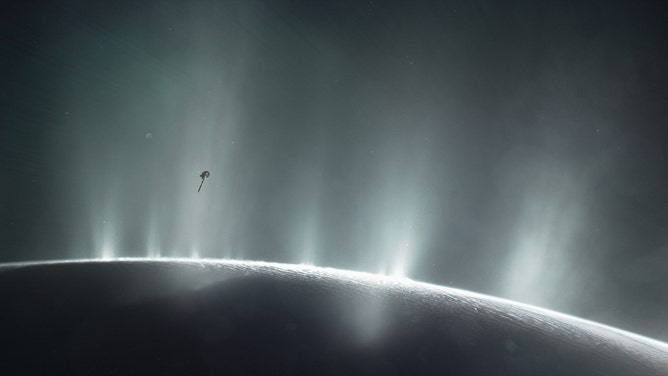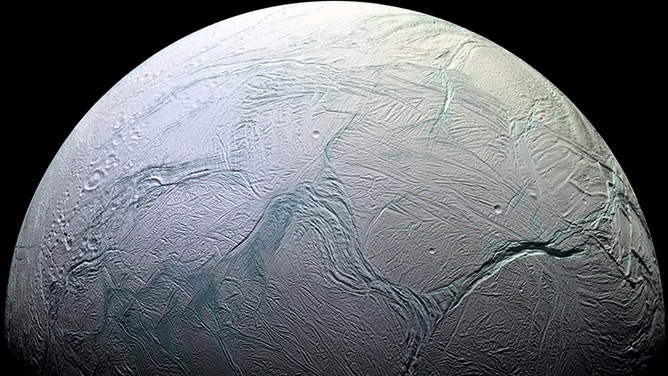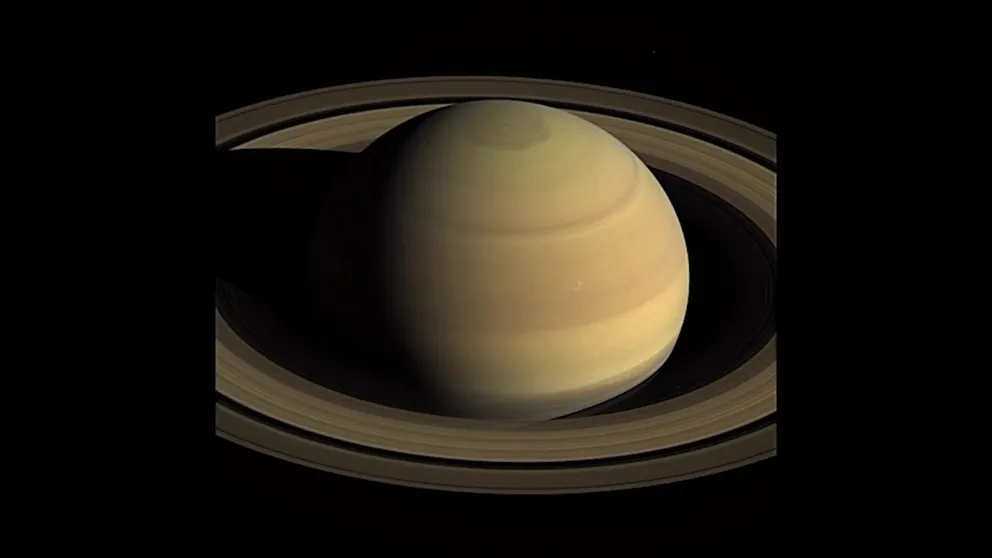Saturn's ocean moon Enceladus creates ‘donut’ of water around ringed planet, scientists say
One of 124 moons orbiting Saturn, Enceladus is about the size of Arizona and, unlike its desert counterpart, contains an ocean of liquid saltwater underneath an icy shell.
Watch: Four days at Saturn
NASA's Cassini spacecraft stared at Saturn for nearly 44 hours on April 25 to 27, 2016, to obtain this movie showing just over four Saturn days. (Courtesy: NASA/JPL-Caltech/Space Science Institute)
A large water vapor plume shooting from one of Saturn's moons has created a ring of water around the ringed planet, according to NASA.
In a study released Tuesday, scientists said they used the James Webb Space Telescope to take their first-ever direct look at how the water emissions from Enceladus supply the Saturnian system and its famed rings.
One of 124 moons orbiting Saturn, Enceladus is about the size of Arizona and, unlike its desert counterpart, contains an ocean of liquid saltwater underneath an icy shell. Some of this water spews into space as vapor emitted by geyser-like volcanoes on the moon.

Artist's concept of plumes emitted from Enceladus.
(NASA / NASA)
The eruptions of water vapor were first spotted by the Cassini spacecraft, but scientists said the image recently taken by Webb was exceptional.
According to NASA, the plume gushes about 79 gallons of water vapor per second – enough to fill an Olympic-sized swimming pool in about two hours. For comparison, NASA said this task would take more than two weeks on Earth using a garden hose.
The image also showed the water vapor plume shooting from the south pole of Enceladus extends more than 6,000 miles, which is a distance that is about 20 times the width of the moon.
NASA DEVELOPING SNAKE-LIKE ROBOT TO SLITHER OVER ONE OF SATURN'S MOONS

In this image, NASA’s James Webb Space Telescope’s instruments are revealing details into how one of Saturn’s moon’s feeds a water supply to the entire system of the ringed planet.
(NASA, ESA, CSA, STScI, Leah Hustak (STScI) / NASA)
In addition to the distance and amount of water expelled by the plume, scientists noted that the plume creates a "donut" of water around Saturn as Enceladus orbits its ringed planet and leaves a trail of water vapor behind.
"The orbit of Enceladus around Saturn is relatively quick, just 33 hours," said lead author Geronimo Villanueva of NASA’s Goddard Space Flight Center in Greenbelt, Maryland. "As it whips around Saturn, the moon and its jets are basically spitting off water, leaving a halo, almost like a donut, in its wake."
"In the Webb observations, not only was the plume huge, but there was just water absolutely everywhere," Villanueva added.

FILE - Enceladus.
(NASA / NASA)
Known as a torus, the ring of water is co-located with Saturn’s outermost and widest ring, scientists said. The torus contains about 30% of the water emitted from the water vapor plume from Enceladus.
Researchers also determined that the remaining 70% of the water from the plume escapes, supplying the rest of Saturn’s system with water.
Astronomers said they will continue to use Webb to make further discoveries about Enceladus and its ocean.
"Right now, Webb provides a unique way to directly measure how water evolves and changes over time across Enceladus' immense plume, and as we see here, we will even make new discoveries and learn more about the composition of the underlying ocean," said co-author Stefanie Milam at NASA Goddard.
